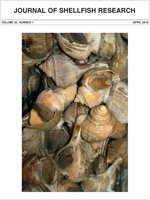Understanding aspects of reproduction is important for studies of life history strategy and for resource management. The influences of nine factors (five intrinsic, four extrinsic) on the reproductive attributes egg diameter, egg dry weight, and clutch size (i.e., number of eggs in egg mass) of female stone crabs (genus Menippe (Say)) from Tampa Bay, FL, waters were investigated. Two intrinsic factors influenced reproductive attributes: carapace width was positively correlated with clutch size, and egg stage was positively related to egg size. Three intrinsic factors—genotype class, damaged or missing pleopods, and missing claws or legs—had no influence on any reproductive attribute. The four extrinsic factors each influenced at least two reproductive attributes. Egg diameter and weight were significantly larger and clutch size was significantly smaller (1) in females uninfested by Octolasmis mülleri; (2) during the early part of the spawning season, when water temperature was 27°C or less; and (3) during the first year of the 3-y study. In addition, egg diameter varied significantly among season/year combinations. In all cases, when egg diameter and weight decreased, clutch size increased; suggesting that, in female stone crabs, selection for filling the available abdominal space with eggs is strong. Large eggs are known to produce larvae of high fitness in crabs. Because the largest eggs are produced during the early part of the spawning season, females should be protected from harvest during that time. Shortening the harvest season in spring would eliminate those females from vulnerability to the fishery.
How to translate text using browser tools
1 April 2016
Factors Influencing Reproductive Attributes of Stone Crabs (Menippe) in Tampa Bay, Florida
Theresa M. Bert,
Stephen P. Geiger,
Susan D. Gerhart,
Kevin J. McCarthy
ACCESS THE FULL ARTICLE

Journal of Shellfish Research
Vol. 35 • No. 1
April 2016
Vol. 35 • No. 1
April 2016




